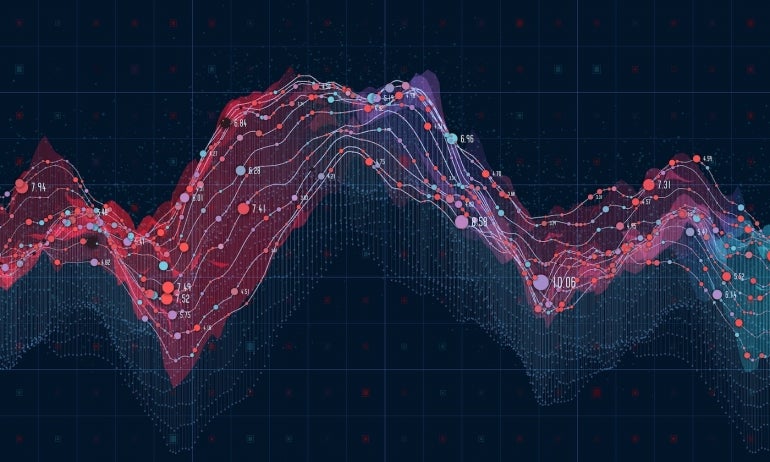Data ingestion and ETL are often used interchangeably. But, they’re not the same thing. Here’s what they mean and how they work.

Today’s businesses have increased the amount of data they use in daily operations, allowing them to meet growing customer needs and respond to issues more efficiently. But, managing these growing pools of business data can be difficult, especially if you don’t have optimized storage systems and tools.
SEE: Data migration testing checklist: Through pre- and post-migration (TechRepublic Premium)
ETL and data ingestion are both data management processes that can make data migration and other data optimization projects more efficient. However, although ETL and data ingestion have some overlap in purpose and function, they are distinctive processes that can bring value to an enterprise data strategy.
Jump to:
What is data ingestion?
Data ingestion is an umbrella term for the processes and tools that move data from one place to another for further processing and analysis. It typically involves transporting some or all data from external sources to internal target locations.
Batch data ingestion and streaming data ingestion are two of the most common data ingestion approaches. Batch data ingestion involves gathering and moving information at scheduled intervals.
In contrast, information collection and movement during streaming data ingestion occur in or near real-time. Streaming data ingestion is typically the better of the two choices when people want to use current data to shape their decision-making processes.
What is ETL?
ETL, or extract, transform and load, is a more specific way to handle data. Here’s a closer look at the three phases:
- Extract: The extract stage involves taking data from its sources. This step requires you to work with both structured and unstructured data.
- Transform: Transforming data involves changing it into a high-quality, reliable format that aligns with a company’s reporting requirements and intended use cases. Actions taken during this step include correcting inconsistencies, adding missing values, excluding or discarding duplicate data, and completing other tasks to increase data quality.
- Load: Loading data means moving it to its target location. Sometimes that’s a data warehouse repository that holds structured data; in other cases, data is loaded into a data lake, which accommodates both structured and unstructured data.
ETL is an end-to-end process that allows companies to prepare datasets for further usage.
How are data ingestion and ETL similar?
Despite their different goals, data ingestion and ETL share many similarities. In fact, some people consider ETL a type of data ingestion, although it includes more steps than just collecting and moving information.
Additionally, data ingestion and ETL can both support tighter cloud security, adding additional layers of accuracy and protection to datasets as they move to and transform in the cloud. Both of these processes also improve an organization’s overall data knowledge and literacy, as they take the time to meticulously move and change their data to the right format. As a result of either data ingestion or ETL projects, these teams will more than likely identify new data security opportunities they need to take advantage of.
SEE: Top 5 best practices for cloud security (TechRepublic)
Finally, assistive software is available for both ETL and data ingestion processes. Although some solutions are strictly designed for one or the other, the overlap in what these processes do means many data ingestion products perform some or all of the steps of ETL.
How are data ingestion and ETL different?
Data teams generally use ETL when they want to move data into a data warehouse or lake. If they choose the data ingestion route, there are more potential destinations for data; for example, data ingestion makes it possible to move data directly into tools and applications in the company’s tech stack.
SEE: Job description: ETL/data warehouse developer (TechRepublic Premium)
In addition, data ingestion involves collecting raw data, which may still be plagued with numerous quality issues. ETL, on the other hand, always includes a stage in which information is cleaned and changed into the right format.
ETL can be comparatively slower than data ingestion, which usually occurs in near-real time. A data warehouse might receive new data once a day or on an even slower schedule. That reality makes it difficult and sometimes impossible to access information immediately.
Can data ingestion and ETL be used together?
Many companies use data ingestion and ETL strategies simultaneously. How and when they do that largely depends on how much information they must handle and whether they have existing infrastructure to help with the project. For example, if a company does not have a data warehouse or lake, it is probably not the best time for them to focus on developing an ETL strategy.
SEE: Cloud data warehouse guide and checklist (TechRepublic Premium)
One of the primary benefits of data ingestion is that it does not require a company to go through an operational transformation before it starts the process. The main thing these companies must focus on is pulling data from reliable sources.
However, when pursuing ETL as a data management strategy, organizations may need to expand their current infrastructure, hire more team members and purchase additional tools. In comparison, data ingestion is a relatively low-skill task.
Getting started with data ingestion and ETL
Enterprises must evaluate their data priorities first before they decide when and how to use data ingestion and/or ETL. Data professionals should question how data ingestion and ETL support short and long-term goals for using data in the organization.
The main thing to remember is that neither data ingestion nor ETL is the universally best choice for every data project. That’s why it’s common for companies to use them in tandem.
Read next: Best ETL tools and software (TechRepublic)